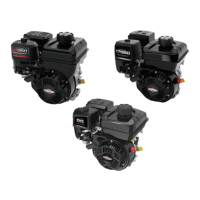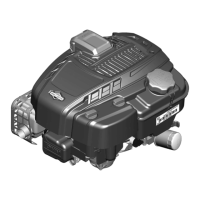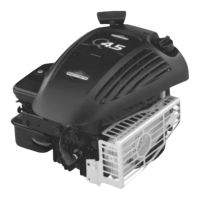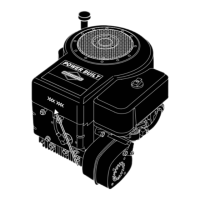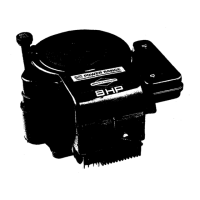GENERAL INFORMATION
Engine Identification
See (A) or (B) in Figure 1 for location of engine
identification.
1
Fuel Recommendations
Fuel must meet these requirements:
• Clean, fresh, unleaded gasoline.
• A minimum of 87 octane / 87 AKI (91 RON). For high
altitude use, see below.
• Gasoline with up to 10% ethanol (gasohol) is
acceptable.
NOTICE
Do not use unapproved gasolines, such as E15
and E85. Do not mix oil in gasoline or modify the engine
to run on alternate fuels. Use of unapproved fuels will
cause damage to engine components, which will not be
covered under warranty.
To protect the fuel system from gum formation, mix a fuel
stabilizer into the fuel. See Storage. All fuel is not the same.
If starting or performance problems occur, change fuel
providers or change brands. This engine is certified to
operate on gasoline. The emissions control system for this
engine is EM (Engine Modifications).
High Altitude
At altitudes over 5,000 feet (1524 meters), a minimum 85
octane / 85 AKI (89 RON) gasoline is acceptable.
For carbureted engines, high altitude adjustment is required
to remain emissions compliant. Operation without this
adjustment will cause decreased performance, increased
fuel consumption, and increased emissions. Contact a
Briggs & Stratton Authorized Service Dealer for high altitude
adjustment information. Operation of the engine at altitudes
below 2,500 feet (762 meters) with the high altitude
adjustment is not recommended.
For Electronic Fuel Injection (EFI) engines, no high altitude
adjustment is necessary.
Oil Recommendations
Oil Capacity: See the
Specifications
section.
NOTICE
This engine was shipped from Briggs & Stratton without
oil. Equipment manufacturers or dealers may have added
oil to the engine. Before you start the engine for the first
time, make sure to check the oil level and add oil
according to the instructions in this manual. If you start
the engine without oil, it will be damaged beyond repair
and will not be covered under warranty.
We recommend the use of Briggs & Stratton Warranty
Certified oils for best performance. Other high-quality
detergent oils are acceptable if classified for service SF,
SG, SH, SJ or higher. Do not use special additives.
Outdoor temperatures determine the proper oil viscosity for
the engine. Use the chart to select the best viscosity for the
outdoor temperature range expected. Engines on most
outdoor power equipment operate well with 5W-30 Synthetic
oil. For equipment operated in hot temperatures,
Vanguard™ 15W-50 Synthetic oil provides the best
protection.
7
1
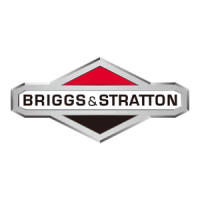
